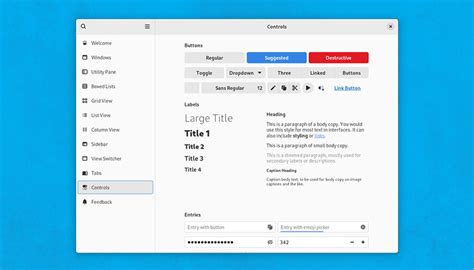In the landscape of Linux desktop environments, the introduction of Libadwaita has sparked a broad spectrum of responses. Libadwaita represents a pivotal split from GTK, aiming to delineate the differences between the toolkit and GNOME’s design language. This move has been characterized by some as a strategic decision driven by practical necessity, while others view it as a step towards further segmentation within the Linux ecosystem. The context of this debate brings into focus fundamental questions about user experience, design consistency, and the broader impacts on the open-source community. The divergence encapsulated by Libadwaita isn’t merely a technical maneuver but a reflection of deeper currents affecting the trajectory of desktop environments on Linux.
One of the core issues that has come to light is the perceived fragmentation caused by Libadwaita. For a long period, Gtk and GNOME were intertwined to a degree that meant development in one sphere naturally influenced the other. With Libadwaita—a library dedicated to encapsulating GNOME-specific widgets and design conventions—the GTK toolkit is now poised to regain its broader portability and purpose. This separation theoretically allows GTK to evolve as a more universally accessible toolkit, devoid of design constraints specific to GNOME. However, the immediate consequence is a splitting of the ecosystem that’s left developers and users grappling with the implications.
The comments surrounding this development illuminate diverse perspectives within the community. Commentators have noted that GTK was not always tethered to GNOME; historically, it originated from GIMP. As one user noted, ‘GTK was not always tied to GNOME. It was born with GIMP; and XFCE was remade into GTK making it faster than Gnome itself.’ This historical context brings into relief how changes in the toolkit’s evolution reflect broader shifts in its intended use cases. The fundamental challenge lies in balancing general-purpose applicability with the specific needs of software within the GNOME ecosystem.
One significant criticism highlighted by users is the impact on cross-platform compatibility. The introduction of Libadwaita has, for the first time in recent memory, made certain GNOME applications incompatible with non-GNOME desktops. This conflict is underscored by user frustrations: ‘The consequences have been to introduce a situation where, for the first time in quite a long period, large swathes of significant, widely-used programs are no longer capable of fitting in on non-GNOME desktops.’ Such challenges speak volumes about the ongoing struggle to maintain consistency across diverse desktop environments while brandishing a unified user experience—a dilemma that fosters both opportunities and tensions.
Another layer to this onion involves the implications for theming and customization. For years, GTK themes provided a level of personalization that many users came to expect, enabling a seamless and integrated aesthetic across applications. The shift to Libadwaita complicates this landscape, reportedly making it harder to apply non-Adwaita themes universally. One commenter sarcastically noted, ‘…the first thing you have to do is patch the UI library to remove the hardcoded default theme. The free software world wasn’t meant to be like this.’ This shift underscores the balance that needs to be struck between a consistent default and user-driven customization—a balance that Libadwaita seems to have yet to perfect.
Despite the criticisms, there is an undercurrent of understanding and grudging acceptance among some community members. They recognize the practical reasons behind GNOME’s decisions. For instance, the distinction between general-purpose and GNOME-specific APIs, and the effort to better modularize them, is seen as a logical step forward. As one user pointed out, ‘APIs in category A. are clearly suitable for moving to GTK+, APIs in category B. may or may not be suitable, and things in category C. are better off in a GNOME-specific library.’ Such positions highlight the inherent complexity in developing software that needs to serve broad and targeted purposes simultaneously.
Looking ahead, the future of Libadwaita and its impact on GTK and GNOME is still unfolding. For developers, the split introduces new layers of effort in maintaining cross-environment compatibility. For users, it means adapting to the evolving landscape of Linux toolkits and the desktop environments they power. While some see it as a step backward, others view it as GNOME learning from past experiences and mistakes. There is cautious optimism that, with time, the ecosystem will adapt and new libraries like Libadwaita will find their equilibrium within the broader open-source landscape. For now, it’s a reminder that in the world of open-source software, evolution is perpetual and often met with resistance before acceptance.
Ultimately, Libadwaita represents both a challenge and an opportunity for the Linux desktop landscape. It highlights the ongoing negotiation between specificity and generality, innovation and tradition. While it may cause friction in the short term, this move might eventually offer a cleaner, more modular approach to software design in the GNOME ecosystem. As the community continues to navigate this change, what remains evident is the passion and engagement of its members—a driving force that will undoubtedly guide the direction of GTK, GNOME, and the wider desktop environment narrative.


Leave a Reply